
David
|
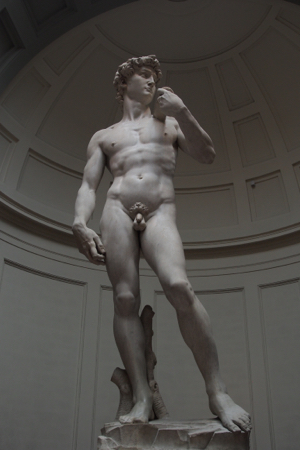
David |
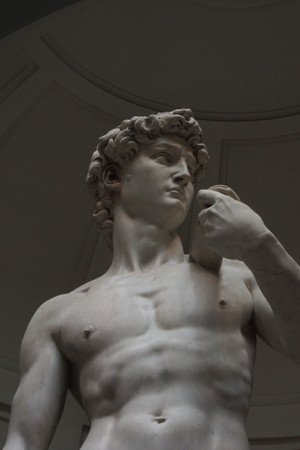
David
|

David |
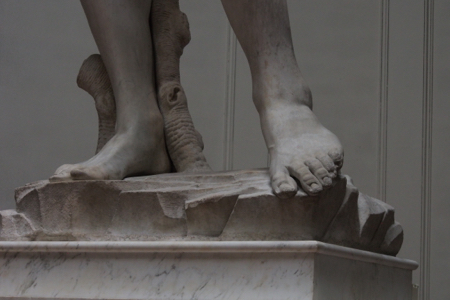
David - details |

David - details |
We wandered through the entire museum and saw the Pieta Palestrina by Michelangelo. One gallery was full of the plaster casts of statues and busts used as models by sculptors and we watched a video of how they are made and used. Most of the rest of the galleries had pre-renaissance religious paintings and triptychs with flat portraits and gold background. One gallery contained various period musical instruments, including an upright grand piano.
|
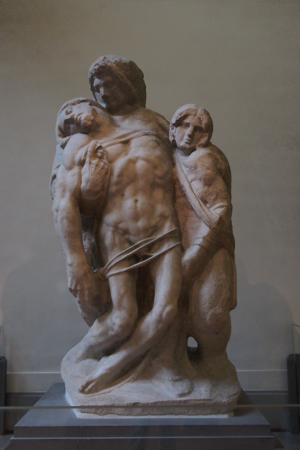
Michelangelo’s Palestrina Pieta
|

Accademia Museum - Musical Instruments |

Accademia Museum - Musical Instruments
|
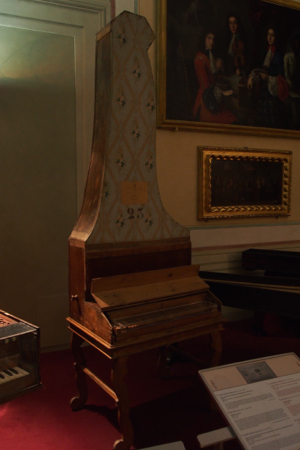
Accademia Museum - Musical Instruments - Upright Grand Piano
|
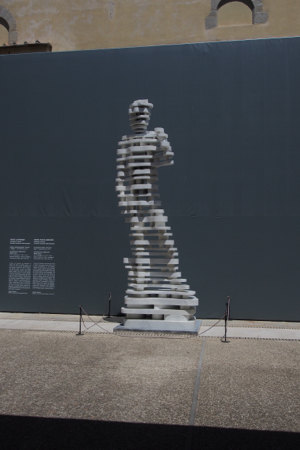
HERO sculpture outside the Accademia by Saracino |
On the way back to Chianciano, we stopped at the Michelangelo Viewpoint and looked back at Florence – wonderful view of the city, and then we stopped at the Florence American Cemetery and Memorial. This is another WW2 cemetery for American soldiers who died on the battlefield during the Italy campaign and the liberation of Florence. The US military maintains the cemetery and the land was given to the US by the Italian government. We participated in a short flag lowering ceremony.
Dinner was in the hotel and it was wonderful. There were about 20 different starters (that they call entrees) that were delicious. Then we had fava bean soup and thick spaghetti called pici.
|
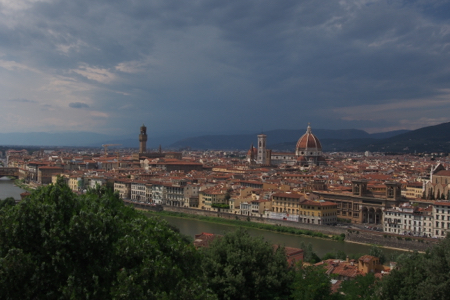
From the Michelangelo Viewpoint |
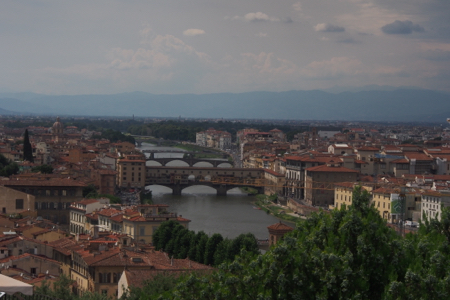
From the Michelangelo Viewpoint
|

Florence's American Memorial Cemetery |
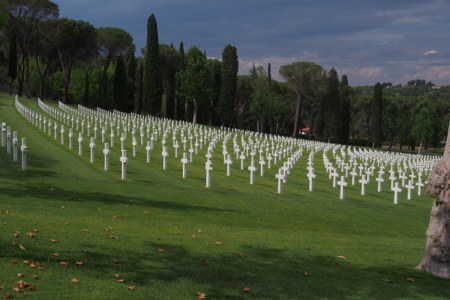
Florence's American Memorial Cemetery
|
Sun., 6/28/15 - Chianciano and Pienza
On our way to Pienza we stopped for a photo op of the medieval town of Montepulchiano. The castle was built on the point of the hill and houses were then built up around it. It is a typical old hill town.
Our next stop was at the Church of San Biagio. We walked down the lane to the church. The lane was lined by marble slabs with the name of a soldier of WW I from the town and the date he was killed. Each stone had a cedar tree planted next to it. The church was built with travertine marble (limestone), also called poor man’s marble. The holes in the stone are filled with powder from marble and polished with pumice and wax to make it shine. We listened to the ringing of the steeple bells.
|
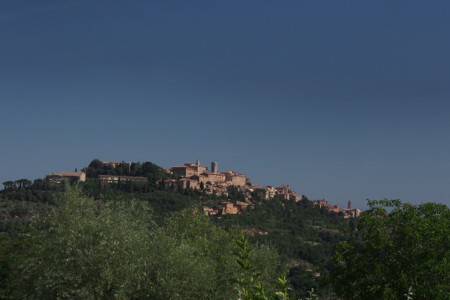
Montepulchiano |
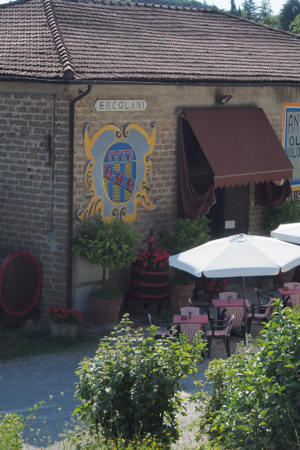
Cute restaurant at the Montepulchiano stop
|
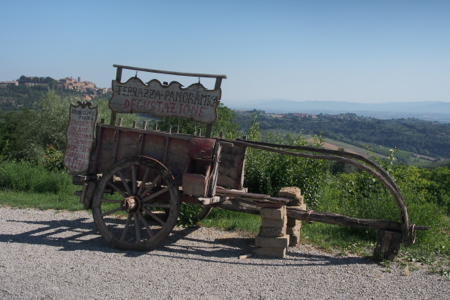
Old produce cart outside the restaurant |

Church of San Biagio
|

Dome of the Church of San Biagio |
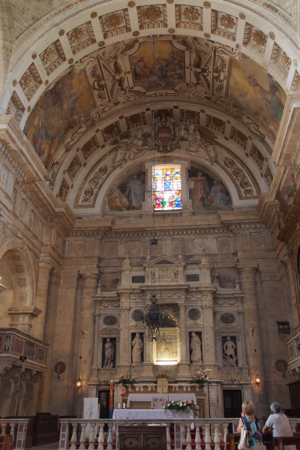
Altar of the Church of San Biagio
|
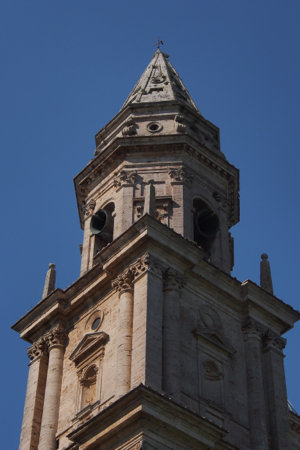
Bell Tower of the Church of San Biagio |
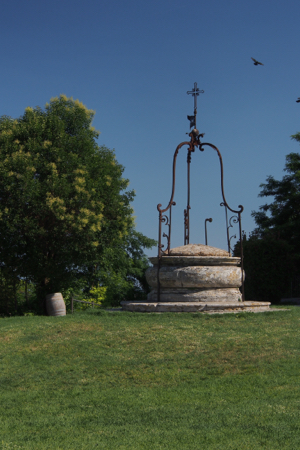
Well on the grounds of the Church of San Biagio
|
We arrived at 550-year-old Pienza and took a sightseeing walk through narrow alleys and cobblestone pedestrian streets. The houses have been restored through the ages but look very authentic. The town walls have wild capers growing on them. I wondered where capers came from. They grow wild.
We went into the Duomo, the Bascillico of St. Peter. It was rather plain. Beside the Duomo is the three-story Piccolo palace. In another unnamed church was an interesting diorama of the birth of Christ made in ceramics by Omaggio A Giotto or P. Sbarluzzi in 1988.
We strolled through more of the picturesque town and then ate lunch together. We walked some more and looked out over the Val d’Orcia (the Orcia Valley) described as “an icon of landscape design.” It is very Tuscan with seven shades of green, three shades of brown and one of black.
Grand Circle treated us to a very welcome gelato before we got back on our bus.
|
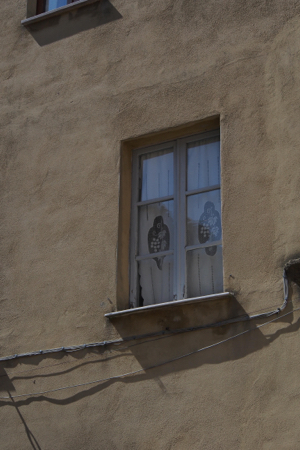
Lace curtained window in Pienza
|

Interesting sign |
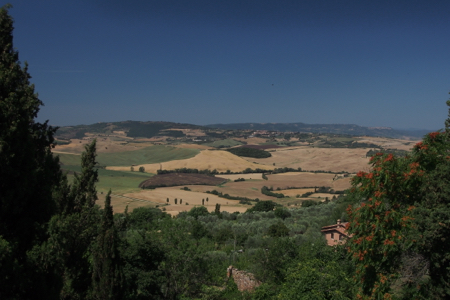
Tuscan countryside (the Orcia Valley) from the walls of Pienza
|

Capers growing wild |

Butterfly |
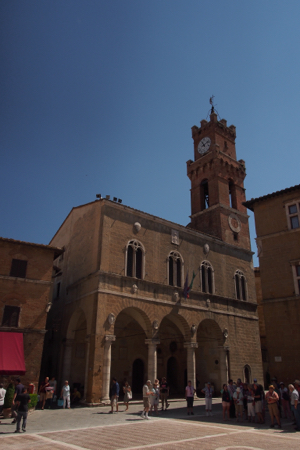
Clock Tower in the Palazzo Comunale
|
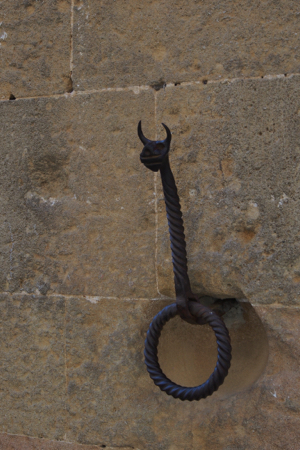
Hitching post
|
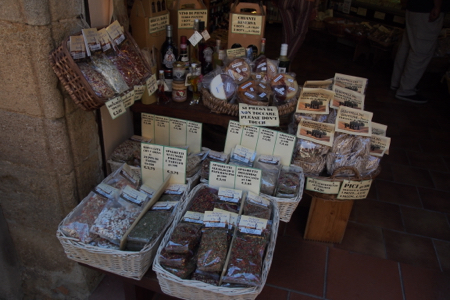
Spices for sale |
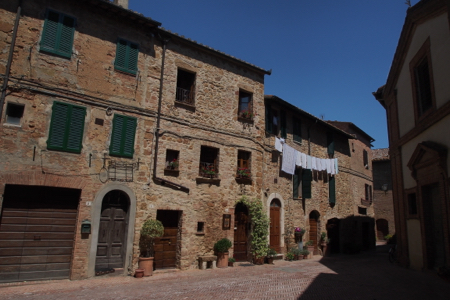
Street scene
|

Cheese and wine market |
We had been instructed to bring small towels on today’s trip for one of Fernando’s surprises. Our stop at Bagno Vignoni was why. This was an old hot spring that the Romans used to turn a flour mill. We took off our shoes and sox and sat with our feet in the water running through the traces cut in travertine. The water was warm, not hot and felt very nice. St. Catherine blessed the springs because she swam there.
|
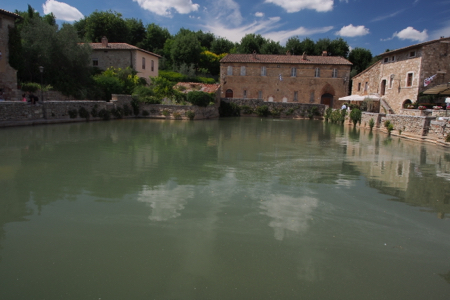
Bagno Vignoni hot springs |
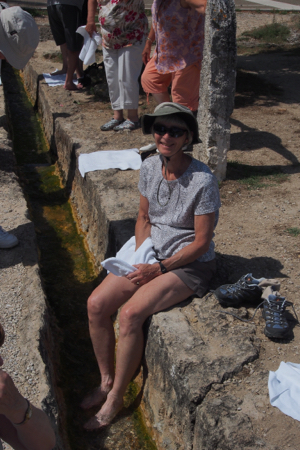
Bagno Vignoni hot springs - Gale with her feet in
|
After a sort nap I went to a lesson on making pasta given by our hotel chef who once worked in an Italian restaurant in West Chester, PA! Six of us volunteered to make pasta. One was made from just flour and water; one from flour, water, and egg; one from potato, flour, and egg; and mine was a gooey mix of ricotta cheese, flour, and egg. It stuck on my fingers as I mixed and kneaded it and was awfully slimy but I finally got it into dough, rolled it into finger-sized ropes, and cut it into gnocchi sized chunks. I was interested in how easily the chef put the other dough through the pasta machine. I want to get out my pasta machine when I get home.
Dinner tonight was at the hotel. We had another very nice meal.
|

Gale making gnocchi pasta
|
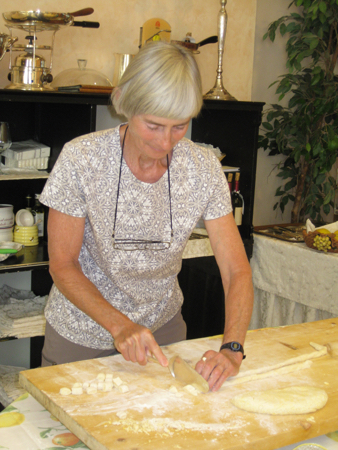
Gale making gnocchi pasta |
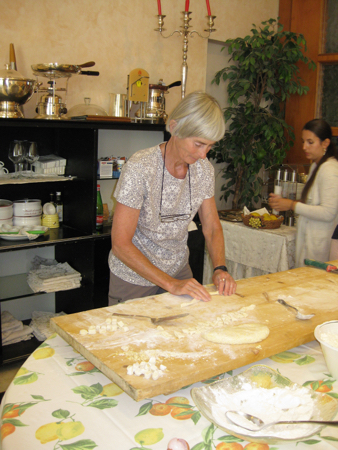
Gale making gnocchi pasta
|
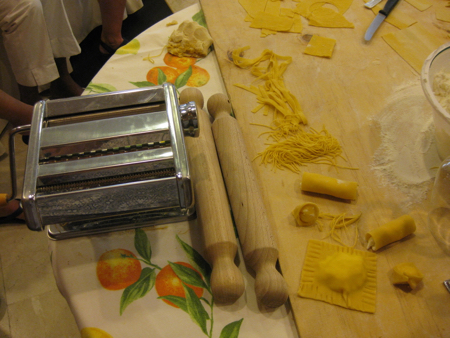
Gale making gnocchi pasta |






































